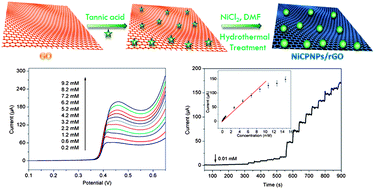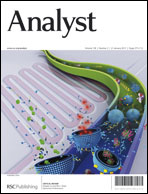Facile synthesis of novel Ni(ii)-based metal–organic coordination polymernanoparticle/reduced graphene oxide nanocomposites and their application for highly sensitive and selective nonenzymatic glucose sensing†
Abstract
The present paper reports on the facile preparation of novel Ni(II)-based metal–organic coordination


 Please wait while we load your content...
Please wait while we load your content...